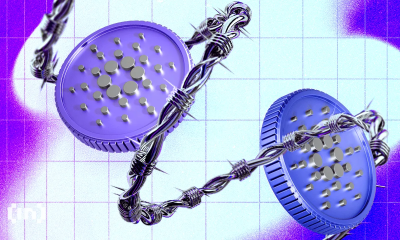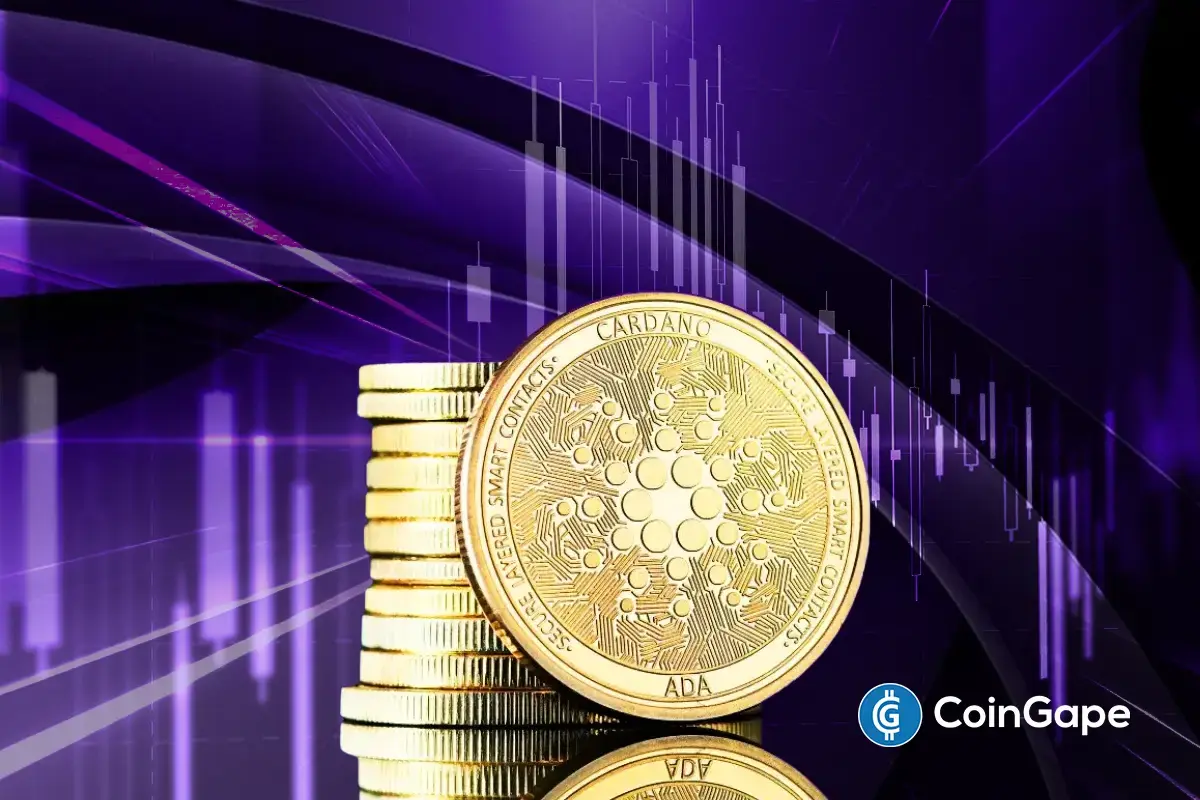Market
Cardano Rolls Out Chang Fork and More

This week in crypto has seen significant advancements, with Polygon’s MATIC token transitioning to POL as part of its 2.0 roadmap and Cardano’s much-anticipated Chang hard fork going live.
These updates mark major steps toward enhanced decentralization and governance improvements for both blockchain ecosystems.
Shiba Inu’s DAO Proposes New Directions for Funds
The Shiba Inu community is currently voting on a proposal to allocate 37.5 ETH (approximately $100,000) received from its partnership with Welly’s. Shiba Inu’s lead developer, Shytoshi Kusama, called on the decentralized autonomous organization (DAO) to vote on how best to use the funds.
The community has four options to consider. The first involves placing the funds in a new multisig wallet, allowing a group of individuals to manage the assets, with decisions directed by the DAO.
Another option proposes using the funds to burn SHIB tokens, while the third suggests funding a community project. The final option would be for the wallet holder to retain the assets and halt future funding.
Snapshot data shows that the majority of voters support the first option, with 78 billion SHIB tokens representing 84.95% of the votes. Meanwhile, the second option received 14 billion SHIB tokens, equivalent to 15.05% of the total. This vote is part of a broader effort to ensure transparency and decentralization in Shiba Inu’s ecosystem, transitioning the DAO from its V1 to V2 phase.
Read more: How To Buy Shiba Inu (SHIB) and Everything You Need To Know

21Shares Launches Wrapped Bitcoin on Ethereum
In other news, 21Shares has expanded its Wrapped Bitcoin (WBTC) product to the Ethereum blockchain. Following its successful launch on Solana, the new Ethereum-based Wrapped Bitcoin (branded 21BTC) aims to provide a more secure and decentralized way for users to engage with decentralized applications (dApps).
Unlike traditional Wrapped Bitcoin models, which rely on a “lock-and-mint” approach, 21BTC prioritizes cold storage solutions, enhancing security. The launch comes amid investor concerns over recent developments in the custody of Wrapped Bitcoin, especially in light of BitGo’s shift to a multi-jurisdictional model.
Despite these concerns, 21Shares is positioning 21BTC as a more secure alternative, with institutional-grade custody designed to mitigate the risks commonly associated with cross-chain bridges.
Trump Family Targeted by Crypto Scam Hack
The Trump family recently fell victim to a hacking incident that compromised their social media accounts to promote a fraudulent crypto scheme. The hacker gained access to the X (formerly Twitter) accounts of Lara and Tiffany Trump, former President Donald Trump’s daughter-in-law and daughter, respectively.
Hackers exploited Lara and Tiffany’s large following to promote a scam involving World Liberty Financial, a decentralized finance (DeFi) project linked to the Trump family. They used the Trumps’ high-profile status to attract followers to a fraudulent governance token associated with the Solana blockchain.
The timing of this hack is particularly noteworthy, as Donald Trump’s team has been planning to launch a crypto platform with the family’s growing involvement in the DeFi space. Moreover, this incident reflects a broader pattern where malicious entities exploit celebrities’ and public figures’ accounts to advertise fraudulent tokens.
Cardano’s Chang Hard Fork: A New Era of Decentralized Governance
Cardano has officially launched its Chang hard fork, marking a major shift toward decentralized governance for the $13 billion blockchain. The upgrade, long-awaited by the community, puts decision-making power in the hands of ADA token holders.
With the Chang hard fork, ADA holders can now elect governance representatives and vote on key development proposals. As outlined in Cardano Improvement Proposal CIP-1694, the upgrade introduces a governance structure comprising three key bodies: the Constitutional Committee, Delegate Representatives (dReps), and Stake Pool Operators (SPOs).
Previously, these governance powers were concentrated in Cardano’s three founding entities. However, with this upgrade, the community gains significant control over the blockchain’s future development.
Cardano founder Charles Hoskinson recently highlighted the significance of this shift, declaring that the “Genesis keys are dead.” This statement symbolizes the blockchain’s move toward a truly decentralized future.
The upgrade will be implemented in two phases. The first phase, currently active, features an Interim Constitutional Committee that will oversee governance for 90 days. After this period, the newly established governance bodies will take full control.
Polygon’s MATIC to POL Migration Kicks Off
Polygon, a leading Layer-2 network built on Ethereum, has begun transitioning from the MATIC token to the new POL token.POL is replacing MATIC as the network’s native token, with the latter currently having a market capitalization of $3.6 billion.
“POL is a hyperproductive token that can be used to provide valuable services to any chain in the Polygon network, including the AggLayer itself. It feels good to know that, as the community builds towards this exciting vision, the network has a future-proof native token that can secure it and support its growth,” Polygon explained.
Migration is a key part of Polygon’s 2.0 roadmap, which aims to enhance the flexibility and scalability of its ecosystem. The transition affects many investors, but most holders on Polygon’s Proof of Stake (PoS) chain will see their tokens automatically converted to POL. However, holders of MATIC on the Ethereum and zkEVM chains may need to migrate their tokens manually through the Polygon Portal Interface.
Read more: How To Buy Polygon (MATIC) and Everything You Need To Know
The POL token will be central to Polygon’s future, serving as the native gas and staking token. It will also be used to generate zero-knowledge proofs and participate in Data Availability Committees (DACs) as part of the Polygon staking hub, which is slated to launch in 2025.
Polygon indicates there is currently no set deadline for MATIC holders to complete the migration. However, it hints that a deadline may be imposed in the future as the transition progresses.
Disclaimer
In adherence to the Trust Project guidelines, BeInCrypto is committed to unbiased, transparent reporting. This news article aims to provide accurate, timely information. However, readers are advised to verify facts independently and consult with a professional before making any decisions based on this content. Please note that our Terms and Conditions, Privacy Policy, and Disclaimers have been updated.
Market
Top 3 Made in USA Coins to Watch In April

Made in USA coins continue to try a rebound, with Solana (SOL), RENDER, and Jupiter (JUP) standing out as key names to watch in April. Despite recent price corrections, each of these tokens plays a major role in high-growth areas like DeFi, AI, and blockchain infrastructure.
Solana has seen its price dip, but ecosystem activity remains strong; RENDER is riding the wave of AI demand despite market turbulence; and Jupiter is showing solid usage metrics even as its token struggles. Here’s a closer look at the technical and fundamental setups for each of these standout U.S.-based projects.
Solana (SOL)
Solana has faced a notable price correction over the past week, with its value dropping nearly 13%. If this bearish momentum continues, the token could be on track to retest the critical support level at $120.
A breakdown below that could see SOL sliding further toward the $112 mark.
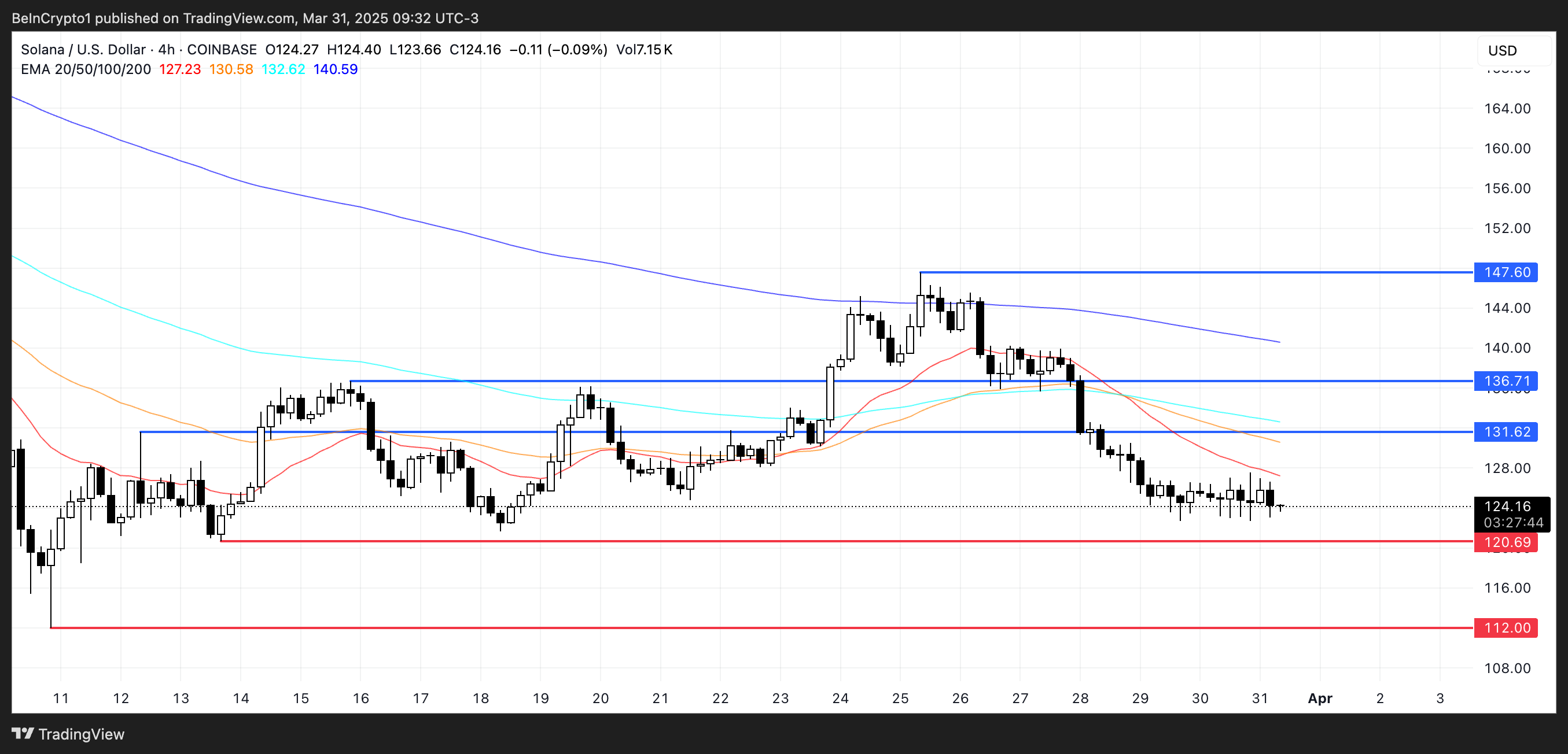
Despite the recent downturn, Solana remains one of the most relevant Made in USA coins and continues to show impressive usage metrics. PumpFun, for example, generated nearly $9 million in revenue over the past 24 hours, second only to Tether.
After a short period when BNB led the DEX volume race, Solana seems to be regaining traction—its decentralized exchange volume has surged by 128% in just seven days, reaching $18 billion and surpassing both Ethereum and BNB.
If this recovery in momentum persists, SOL could target a move toward the $131 resistance level. A successful breakout there could open the door to further gains toward $136 and potentially $147.
RENDER
RENDER, one of the most prominent U.S.-based cryptocurrencies with a focus on artificial intelligence, has seen its price decline nearly 11% over the past seven days.
This drop reflects the broader correction that has impacted many AI-related tokens in recent months.
However, new developments in the AI infrastructure space may provide a catalyst for a potential rebound, especially as the limitations of centralized systems become clear.
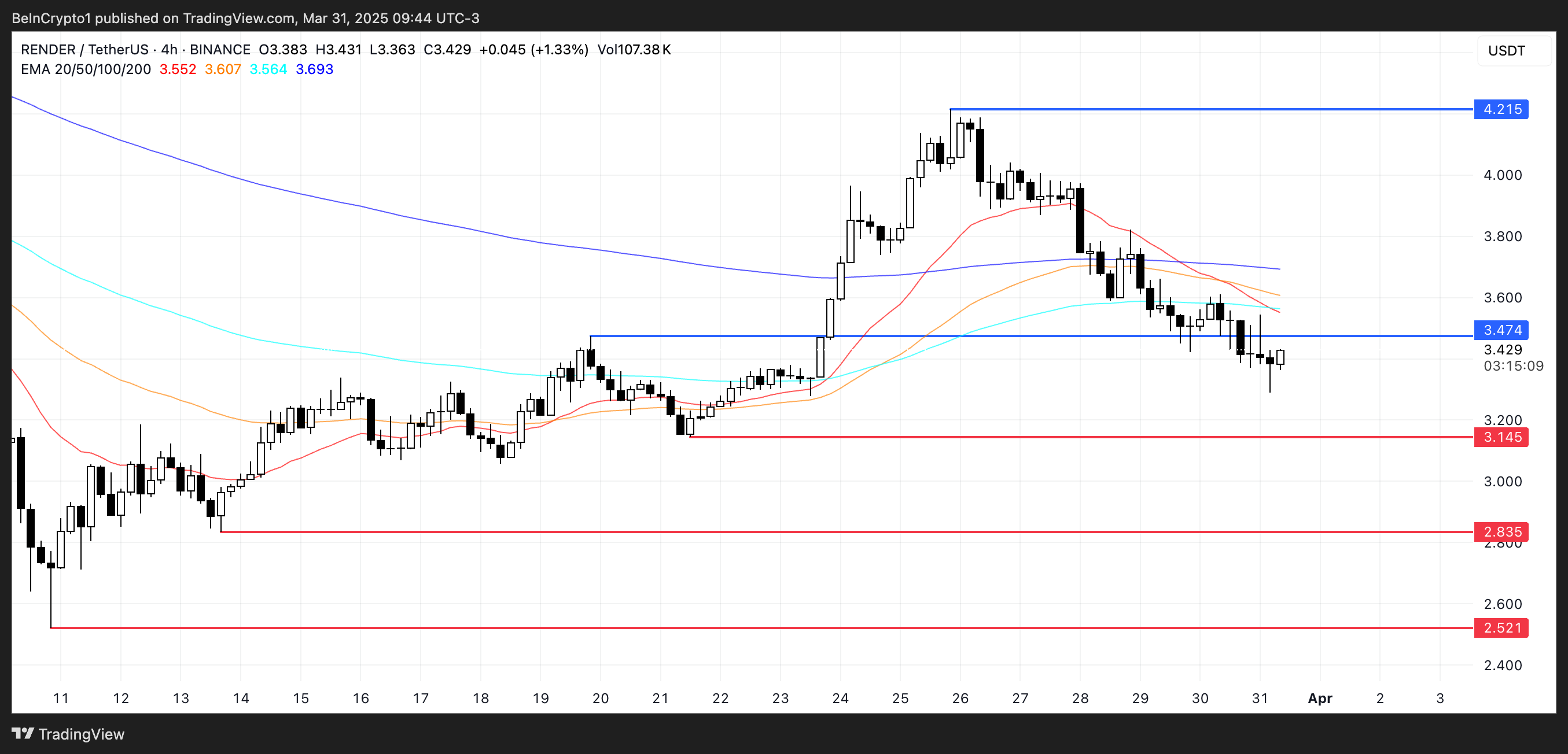
If bullish momentum returns to the AI sector, RENDER could look to challenge the resistance at $3.47, and a successful breakout might open the door for a rally toward $4.21.
However, if the current correction deepens, the token could fall to test the $3.14 support level. A breakdown there may trigger further losses, potentially dragging RENDER down to $2.83 or even $2.52—its lowest level in recent weeks.
Jupiter (JUP)
Despite Solana’s recent struggles, Jupiter—its leading DEX aggregator—is demonstrating impressive strength in terms of activity.
In the last 24 hours, Jupiter ranked as the fourth-highest protocol in crypto by fee generation, collecting nearly $2.5 million.
Only Tether, PumpFun, and Circle managed to outperform it, highlighting the platform’s growing relevance within the Solana ecosystem even during periods of broader market weakness.
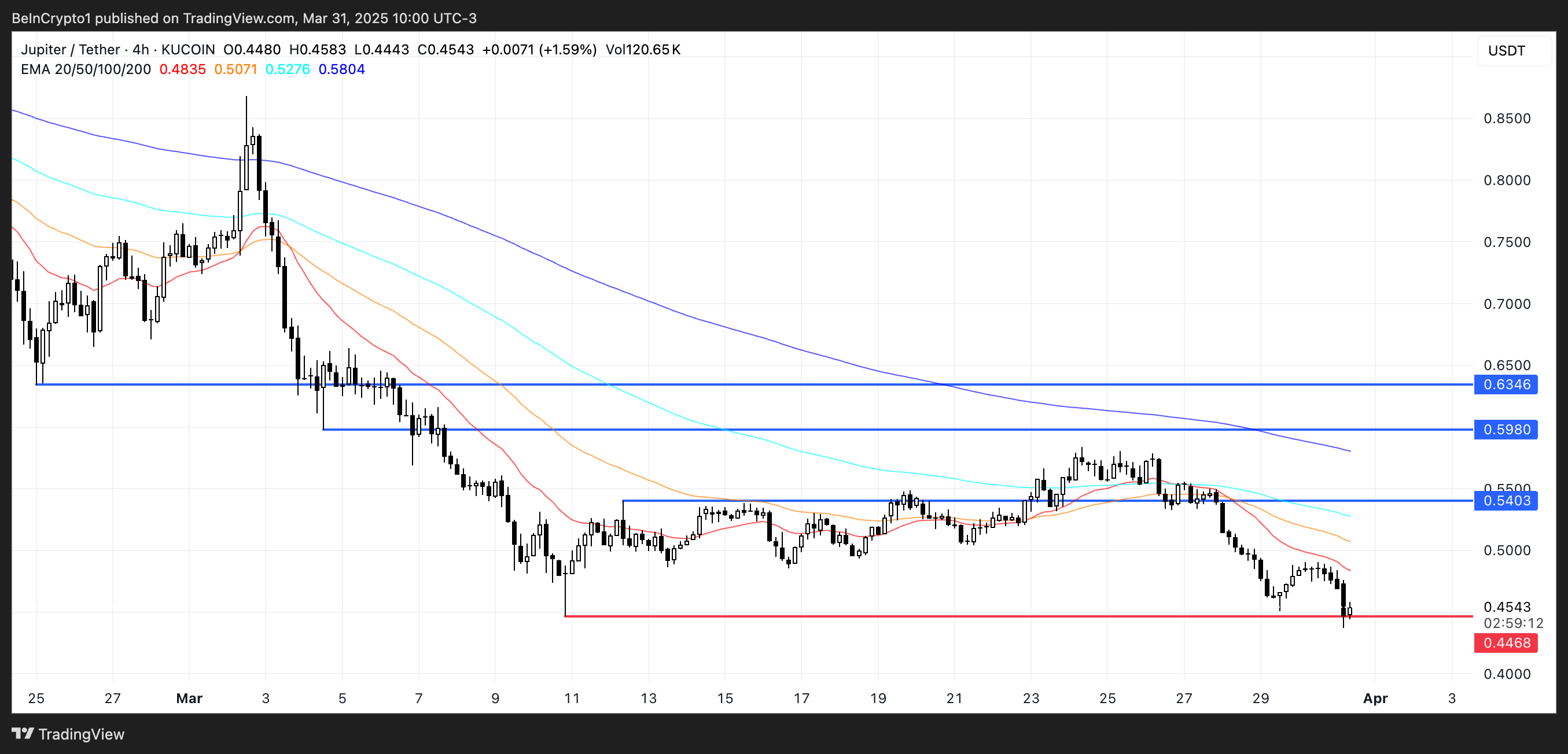
However, JUP, Jupiter’s native token, hasn’t mirrored this positive momentum. Its price has dropped over 21% in the past week, being one of the worst performers among the biggest Made in USA coins. It has remained below the $0.65 mark for three consecutive weeks.
With JUP now hovering dangerously close to a key support at $0.44, a breakdown could see the token dip below $0.40 for the first time ever.
Still, if market sentiment shifts and momentum returns, JUP could begin climbing again—first testing resistance at $0.54, then potentially moving toward $0.598 and even $0.63 if bullish pressure intensifies.
Disclaimer
In line with the Trust Project guidelines, this price analysis article is for informational purposes only and should not be considered financial or investment advice. BeInCrypto is committed to accurate, unbiased reporting, but market conditions are subject to change without notice. Always conduct your own research and consult with a professional before making any financial decisions. Please note that our Terms and Conditions, Privacy Policy, and Disclaimers have been updated.
Market
Cardano (ADA) Whales Hit 2-Year Low as Key Support Retested
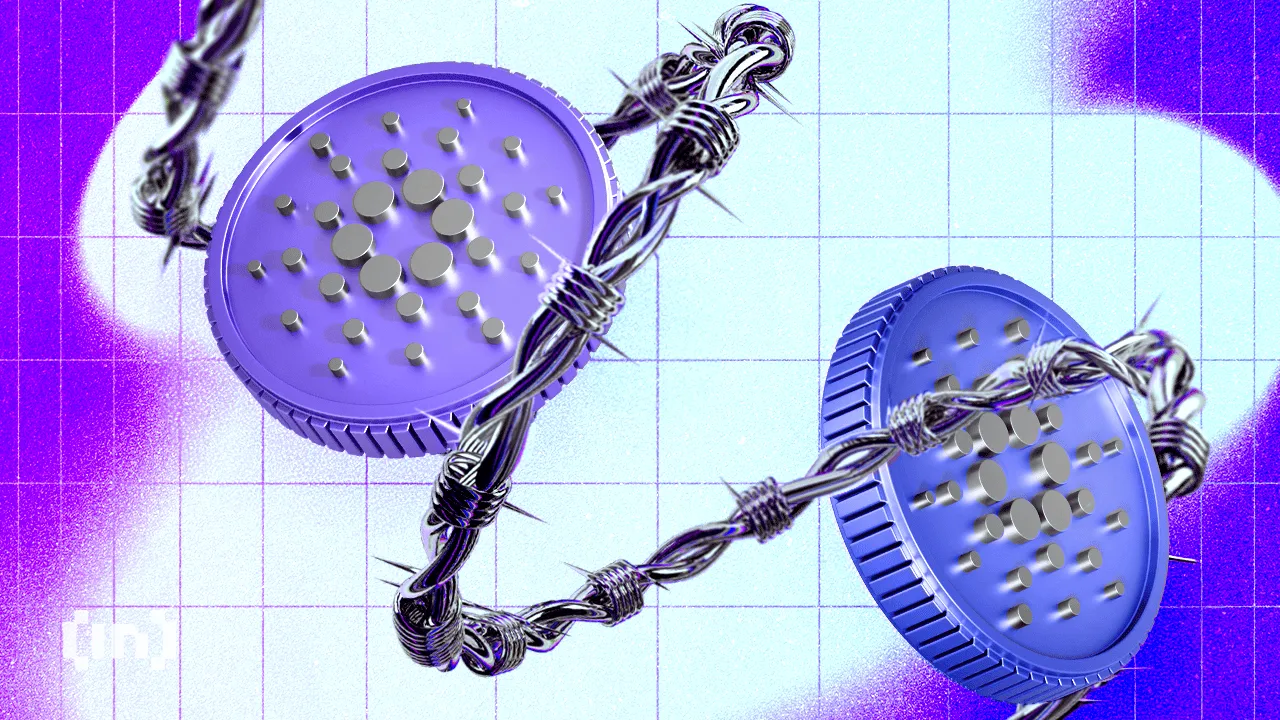
Cardano (ADA) is facing mounting pressure as its price corrects by 10% over the past seven days, continuing a broader downtrend that has kept it trading below the $1 mark for nearly a month. With technical indicators flashing warning signs and large holders exiting their positions, concerns around ADA’s short-term stability are growing.
The recent rejection at higher resistance levels and a strong directional trend signal suggest that bearish momentum is far from over. As the $0.64 support level is tested once again, ADA’s next move could determine whether a rebound is possible—or if further downside is ahead.
Cardano ADX Shows The Downtrend Is Very Strong
Cardano’s Average Directional Index (ADX) is currently at 40.19, rising sharply from 15.83 just four days ago. This steep increase suggests a rapid strengthening in the trend’s momentum.
Given that ADA is currently in a downtrend, the rising ADX indicates that bearish momentum is intensifying and the current downward move is gaining traction.

The ADX is a trend strength indicator that measures how strong a trend is, regardless of its direction. It ranges from 0 to 100, with readings below 20 typically indicating a weak or non-existent trend, while values above 25 suggest a strong trend is in place.
Cardano’s ADX climbing above 40 confirms that the current downtrend is active and becoming stronger. If this trend continues, it may point to further downside pressure unless a shift in momentum begins to build from the bulls.
ADA Whales Dropped To Their Lowest Level Since February 2023
The number of Cardano whales—wallets holding between 1 million and 10 million ADA—has dropped to 2,406, down from 2,421 just four days ago.
This decline brings the whale count to its lowest level since February 2023, marking a potentially meaningful shift in large-holder behavior. These movements are worth paying attention to, as changes in whale holdings often precede broader market trends.
Tracking whales is important because these large holders can significantly influence price action through their buying or selling decisions. A decline in whale numbers can signal reduced confidence or capital rotation into other assets.
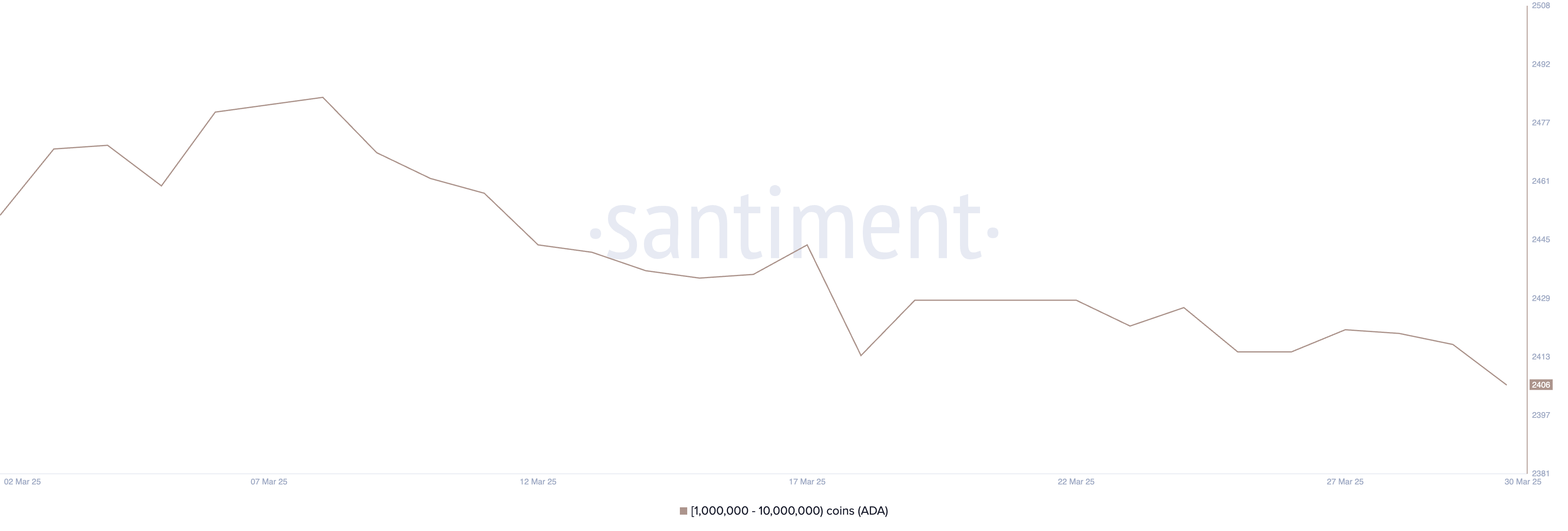
In Cardano’s case, the drop suggests that some major players may be exiting or reducing exposure, which could add downward pressure to ADA’s price.
If this trend continues, it could weaken investor sentiment and make it harder for ADA to recover in the short term.
Can Cardano Sustain The $0.64 Support Again?
Cardano price recently tested the support level at $0.64 and managed to hold, showing that buyers are still defending that zone. This support has become a key line in the sand for ADA’s short-term outlook.
If the current downtrend is reversed and bullish momentum picks up, the next upside target would be the resistance at $0.69. A breakout above that level could open the door for a push toward $0.77.
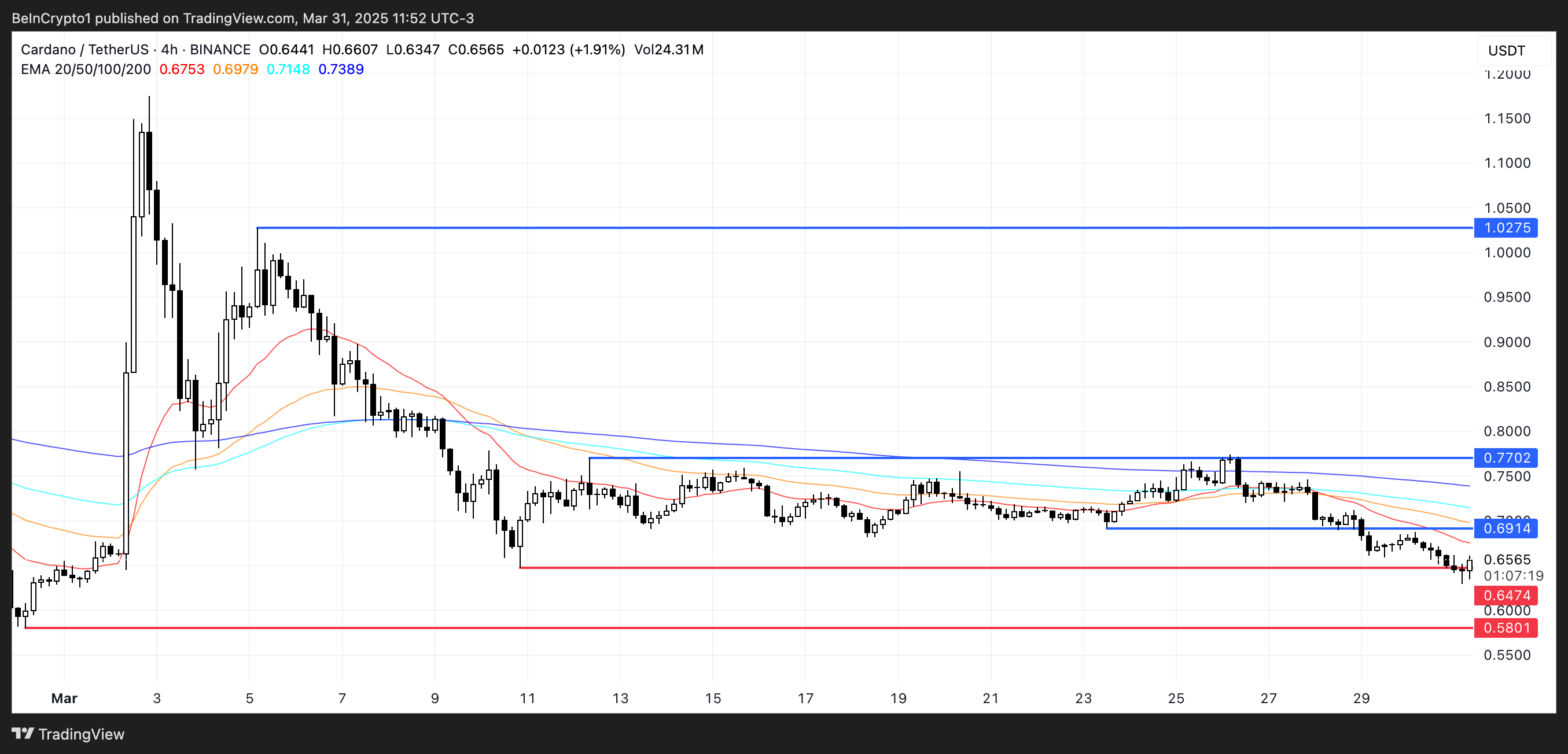
Should the rally continue with strength, ADA could aim for $1.02—marking a return above the $1 level for the first time since early March.
However, the $0.64 support remains a critical level to watch. If Cardano tests it again and fails to hold, it could indicate weakening buyer conviction.
A breakdown below $0.64 would likely send ADA toward the next support at $0.58. This would confirm a continuation of the downtrend and possibly trigger further selling pressure.
Disclaimer
In line with the Trust Project guidelines, this price analysis article is for informational purposes only and should not be considered financial or investment advice. BeInCrypto is committed to accurate, unbiased reporting, but market conditions are subject to change without notice. Always conduct your own research and consult with a professional before making any financial decisions. Please note that our Terms and Conditions, Privacy Policy, and Disclaimers have been updated.
Market
This is Why PumpSwap Brings Pump.fun To the Next Level

Since launching PumpSwap, token launchpad Pump.fun has resumed its position as a top-level protocol by fees and revenue. It saw over $2.62 billion in volume in less than two weeks, signifying high market interest.
Nonetheless, the meme coin sector as a whole has been more volatile than usual lately. PumpSwap is an attractive new option, but it still needs to stand the test of time.
Pump.fun Surges with PumpSwap
Pump.fun, a prominent meme coin creation platform, recently suffered some difficulties in the market. Facing lawsuits and criticism from the industry, the platform’s revenue had been declining in 2025. However, since launching PumpSwap, Pump.fun’s income has rebounded, making it one of the largest protocols by fees and revenue.

PumpSwap is a decentralized exchange on Solana’s blockchain, and it has grown very quickly since its launch less than two weeks ago. It has already managed over $2.62 billion in trade volume, although its daily volume fell over the weekend. Pump.fun’s cofounder spoke highly about PumpSwap, calling it a “crucial step that will help grow the ecosystem.”
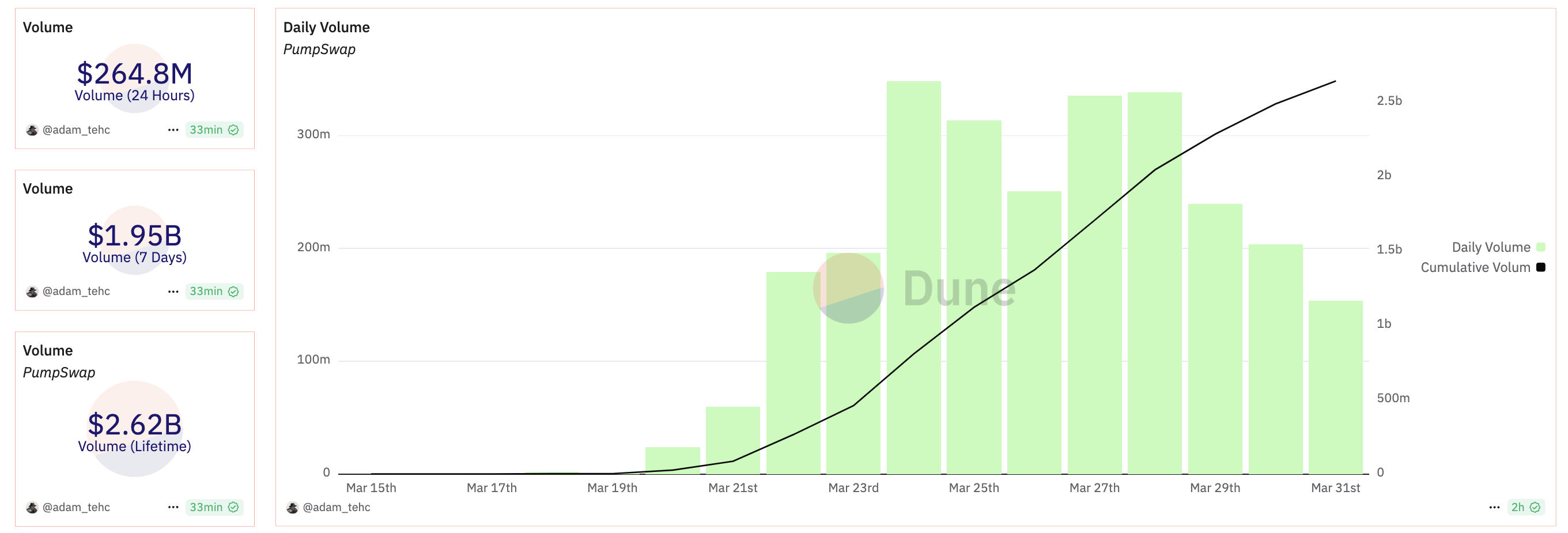
Pump.fun’s overall revenues were declining before it launched PumpSwap, and they have since jumped back up. However, it’s important to not overstate the new exchange’s success. The exchange’s total fees collected have skyrocketed compared to Pump.fun, but the actual revenue growth has been comparatively small.
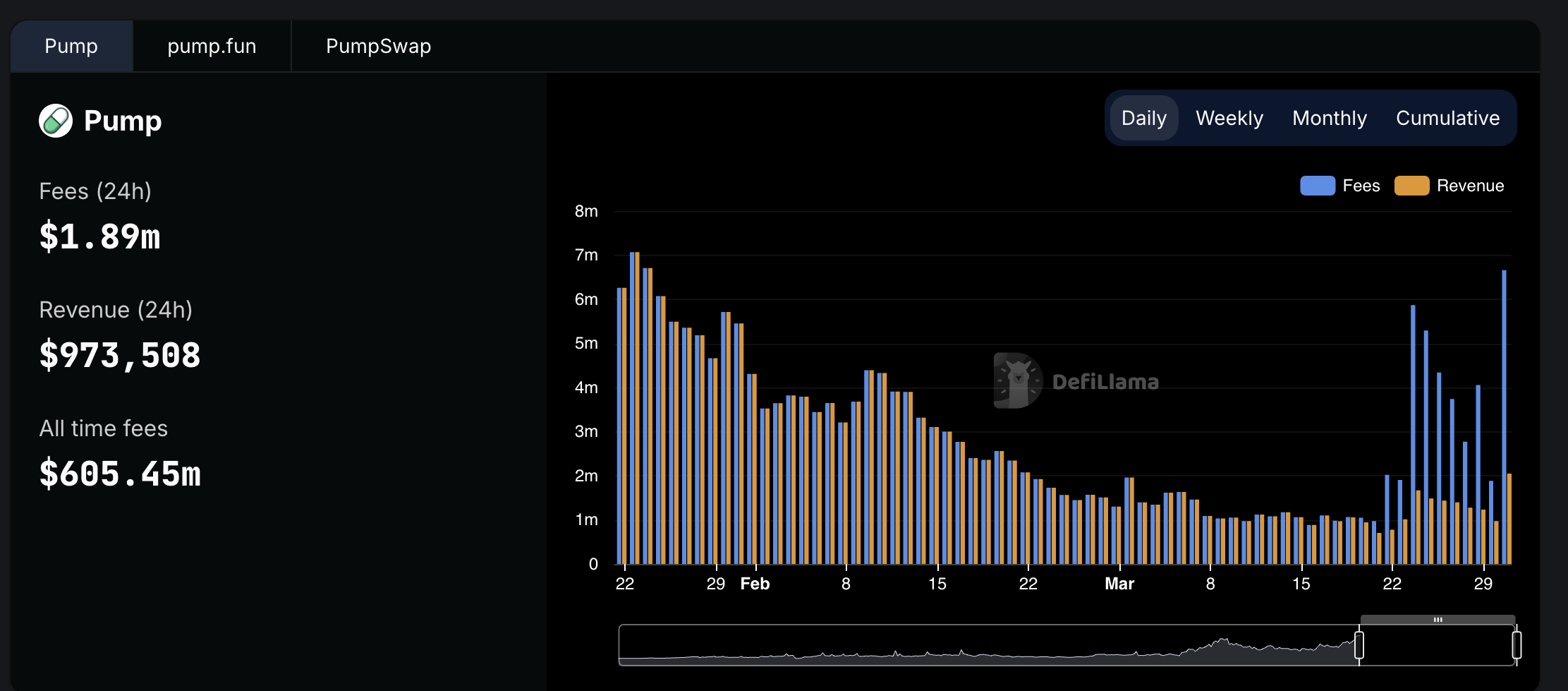
Still, these low fees also have significant advantages. Demand seems to be drying up in the meme coin sector, but Pump.fun faces stiff competition in the form of firms like Raydium, using low fees as a competitive edge. It has also promised things like revenue sharing with token creators to promote ecosystem growth.
Ultimately, the meme coin market as a whole is full of uncertainty. PumpSwap has been able to keep Pump.fun competitive as a top-level platform in this space, giving it a welcome reprieve. The real challenge will come in determining long-term viability.
Disclaimer
In adherence to the Trust Project guidelines, BeInCrypto is committed to unbiased, transparent reporting. This news article aims to provide accurate, timely information. However, readers are advised to verify facts independently and consult with a professional before making any decisions based on this content. Please note that our Terms and Conditions, Privacy Policy, and Disclaimers have been updated.
-

 Market23 hours ago
Market23 hours agoBitcoin Bears Tighten Grip—Where’s the Next Support?
-

 Market9 hours ago
Market9 hours agoTrump Family Gets Most WLFI Revenue, Causing Corruption Fears
-

 Market22 hours ago
Market22 hours agoEthereum Price Weakens—Can Bulls Prevent a Major Breakdown?
-

 Market19 hours ago
Market19 hours agoBitcoin Price Nears $80,000; Fuels Death Cross Potential
-
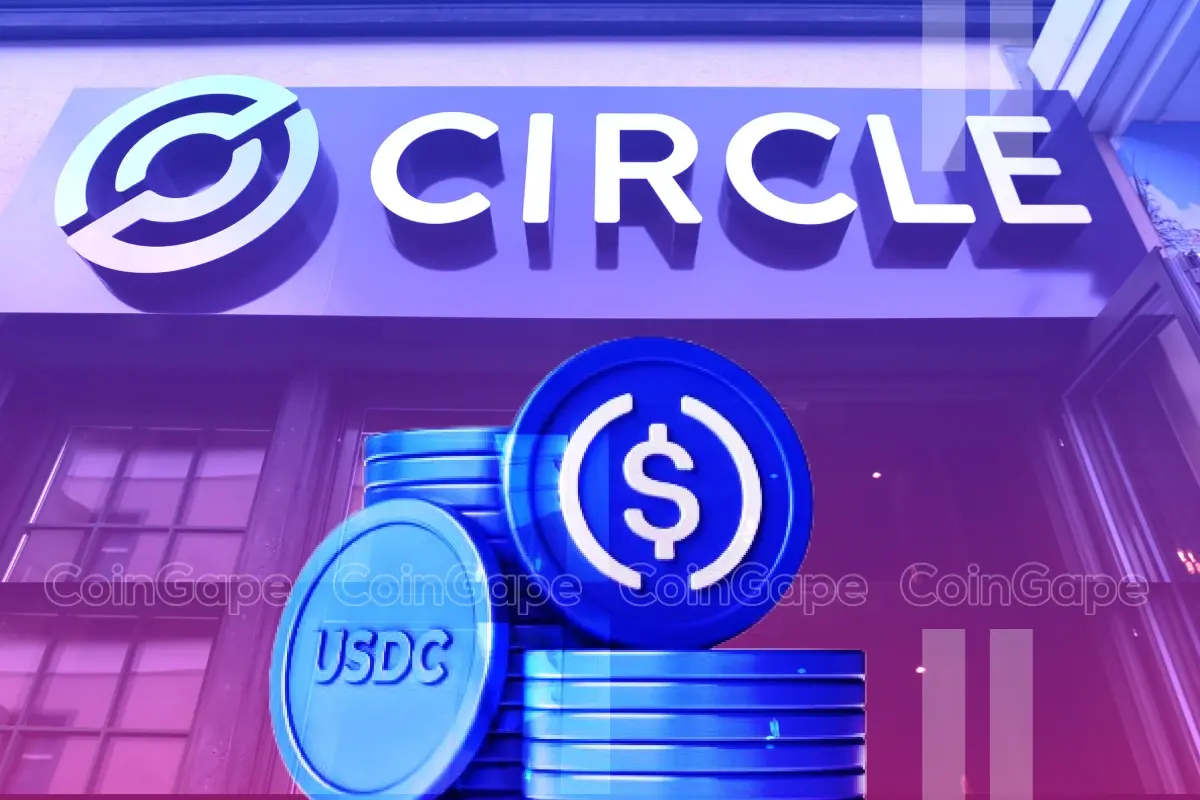
 Regulation12 hours ago
Regulation12 hours agoUSDC Issuer Circle Set To File IPO In April, Here’s All
-

 Bitcoin18 hours ago
Bitcoin18 hours agoUS Macroeconomic Indicators This Week: NFP, JOLTS, & More
-

 Market11 hours ago
Market11 hours agoPi Network Struggles, On Track for New All-Time Low
-

 Market17 hours ago
Market17 hours agoDon’t Fall for These Common Crypto Scams


